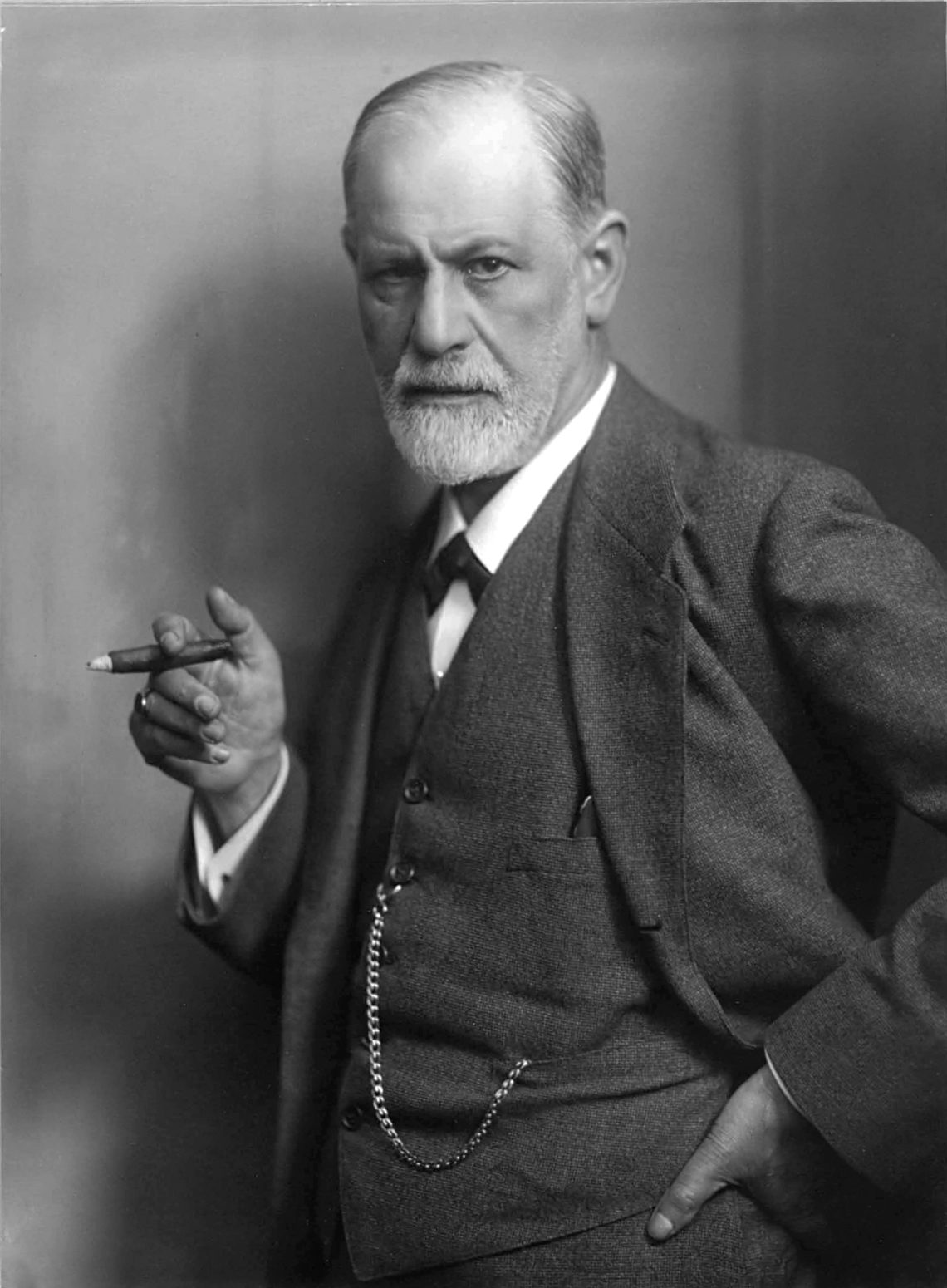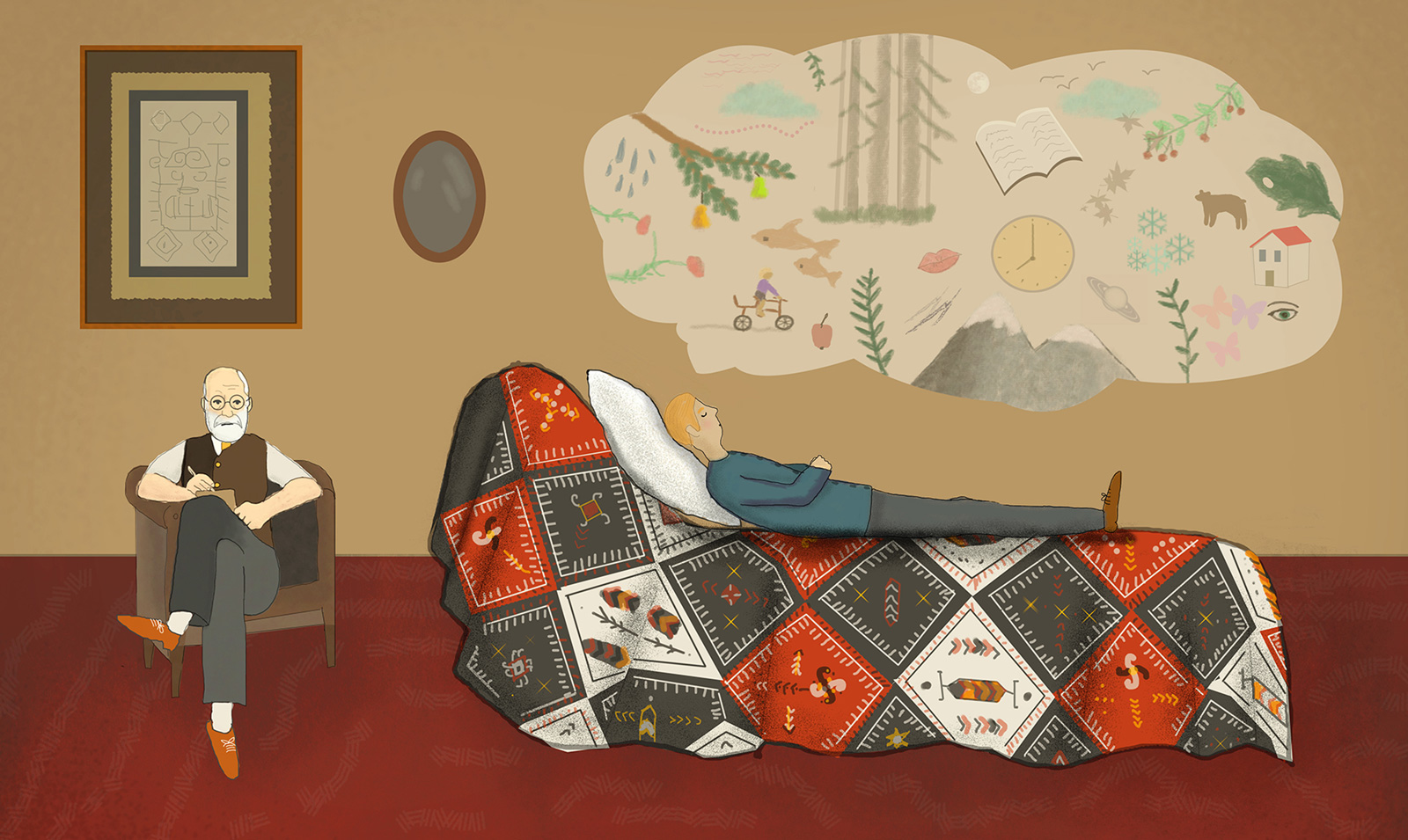
The Basics of Freudian Psychology
Following on from our overview of the work of Carl Jung and his contribution to psychology (which you can read here, if you haven’t already), today we’ll be getting to know another pillar of the field in Sigmund Freud and his many contributions to the sciences of the mind.
Sigmund Freud’s Key Theories
One of Freud’s greatest contributions to psychology was talk therapy, the notion that simply talking about our problems can help alleviate them. It was through his association with his close friend and colleague Josef Breuer that Freud became aware of a woman known in the case history as Anna O, real name was Bertha Pappenheim, who became a patient of Breuer’s after suffering a bout of what was then known as hysteria. Symptoms included blurred vision, hallucinations, and partial paralysis. Breuer observed that discussing her experiences provided some relief from her symptoms. It was Pappenheim herself who began referring to the treatment as the “talking cure.”
Freud concluded that her hysteria was the result of childhood sexual abuse, a view that ended up leading to a rift in Freud and Breuer’s professional and personal relationship. Anna O. may not have actually been Freud’s patient, but her case informed much of Freud’s work and later theories on therapy and psychoanalysis.
Personality Driving Forces
According to Freud’s psychoanalytic theory, all psychic energy is generated by libido. Freud suggested that our mental states were influenced by two competing forces: cathexis and anticathexis.
Cathexis was described as an investment of mental energy in a person, idea, or object. If you are hungry, for example, you might create a mental image of a delicious meal that you have been craving. In other cases, the ego might harness some energy from the id (the primitive mind) to seek out activities related to the desire in order to disperse excess energy from the id. Sticking with the same example, if you can’t actually seek out food to appease your hunger, you might instead thumb through a cookbook or browse through your favorite recipe blog.
Anticathexis involves the ego blocking the socially unacceptable needs of the id. Repressing urges and desires is one common form of anticathexis, but this involves a significant investment of energy. According to Freud’s theory, there is only so much libidinal energy available. When a lot of energy is devoted to suppressing urges via anticathexis, there is less energy for other processes.
Life Instincts and Death Instincts
Freud also believed that much of human behaviour was motivated by two driving instincts: life instincts and death instincts. The life instincts (Eros) are those that relate to a basic need for survival, reproduction, and pleasure. They include such things as the need for food, shelter, love, and sex.
He also suggested that all humans have an unconscious wish for death, which he referred to as the death instincts (Thanatos). Self-destructive behaviour, he believed, was one expression of the death drive. However, he believed that these death instincts were largely tempered by life instincts.

Psyche
In Freudian theory, the human mind is structured into two main parts: the conscious and unconscious mind. The conscious mind includes all the things we are aware of or can easily bring into awareness. The unconscious mind, on the other hand, includes all of the things outside of our awareness—all of the wishes, desires, hopes, urges, and memories that we aren’t aware of, that continue to influence behaviour.
Freudian psychology compares the mind to an iceberg. The tip of the iceberg that is actually visible above the water represents just a tiny portion of the mind, while the huge expanse of ice hidden underneath the water represents the much larger unconscious.
In addition to these two main components of the mind, the Freudian theory also divides human personality into three major components: the id, ego, and superego.
- The id is the most primitive part of the personality that is the source of all our most basic urges. This part of the personality is entirely unconscious and serves as the source of all libidinal energy.
- The ego is the component of personality that is charged with dealing with reality and helps ensure that the demands of the id are satisfied in ways that are realistic, safe, and socially acceptable.
- The superego is the part of the personality that holds all of the internalized morals and standards that we acquire from our parents, family, and society at large.
Psychosexual Development
Freudian theory suggests that as children develop, they progress through a series of psychosexual stages. At each stage, the libido’s pleasure-seeking energy is focused on a different part of the body.
The five stages of psychosexual development are:
- The oral stage: The libidinal energies are focused on the mouth.
- The anal stage: The libidinal energies are focused on the anus.
- The phallic stage: The libidinal energies are focused on the penis or clitoris.
- The latent stage: A period of calm in which little libidinal interest is present.
- The genital stage: The libidinal energies are focused on the genitals.
The successful completion of each stage leads to a healthy personality as an adult. If, however, a conflict remains unresolved at any particular stage, the individual might remain fixated or stuck at that particular point of development. A fixation can involve an over-dependence or obsession with something related to that phase of development. For example, a person with an “oral fixation” is believed to be stuck at the oral stage of development. Signs of an oral fixation might include excessive reliance on oral behaviours such as smoking, biting fingernails, or eating.

Dream Analysis
The unconscious mind played a critical role in all of Freud’s theories, and he considered dreams to be one of the key ways to take a peek into what lies outside our conscious awareness. He dubbed dreams “the royal road to the unconscious” and believed that by examining dreams, he could see not only how the unconscious mind works but also what it is trying to hide from conscious awareness.
Freud believed the content of dreams could be broken down into two different types:
The manifest content of a dream included all the actual content of the dream—the events, images, and thoughts contained within the dream. The manifest content is essentially what the dreamer remembers upon waking.
The latent content, on the other hand, is all the hidden and symbolic meanings within the dream. Freud believed that dreams were essentially a form of wish fulfilment. By taking unconscious thoughts, feelings, and desires and transforming them into less threatening forms, people are able to reduce the ego’s anxiety.
Freud often utilized the analysis of dreams as a starting point in his free association technique. The analyst would focus on a particular dream symbol, then use free association to see what other thoughts and images immediately came to a client’s mind.
Contemporary Views
Regardless of the perception of Sigmund Freud’s theories today, there is no question that he had an enormous impact on the field of psychology. His work supported the belief that not all mental illnesses have physiological causes, and he also recognized that cultural differences have an impact on psychology and behaviour.
His work and writings contributed to our understanding of personality, clinical psychology, human development, and abnormal psychology.
You May Also Like

How To Develop Healthy Sexuality In Children?
2022-04-29
Why Do Some People Have Anger Issues
2023-06-06

